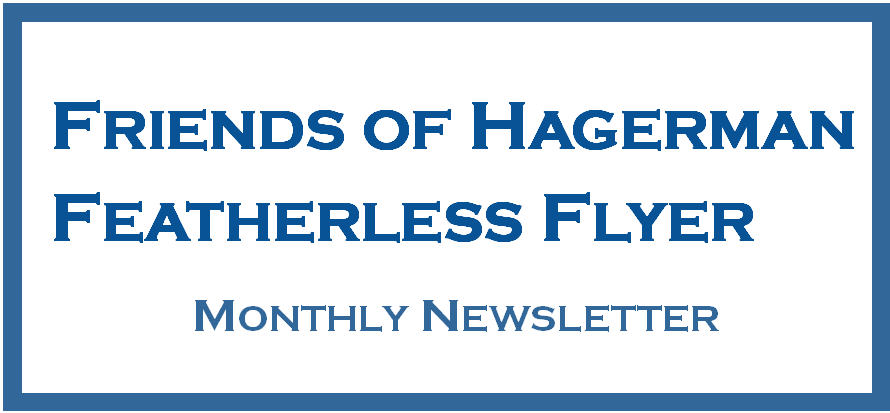All major roads are closed due to flooding, including Wildlife Drive. The Visitor Center is open, and the Butterfly Garden is beautiful! The Nature Festival has been cancelled, but these events will proceed, including our annual Mother's Day Butterfly Garden Walk! |
|
ReWilding Your Land Enjoy this Presentation from the author of our ReWiding Series, Karen Glenn, TMN Photo by Jennifer Vince-Recksiek
|
All major roads are closed due to flooding, including Wildlife Drive. The Visitor Center is open, and the Butterfly Garden is beautiful! Indoor restrooms will be available next week. The Nature Festival has been cancelled, but these events will proceed, including our annual Mother's Day Butterfly Garden Walk!
Our nestbox with a camera has two Eastern Bluebird nestinlings, join us in watching them grow! |
Numbers on the map are stops along the auto tour. |
|
The Photo Club Nature Photo Contest: The Results are in! |
| Best in Show The Huntress by Jeff Gladden |
The 2024 Refuge Roundup: Raptor Festival A fun time was had by all, and everyone enjoyed the live raptor programs by the Blackland Pairie Raptor Center. Thank you, BPRC! Photos by Lea Watson 2024 Nature'Ology: A Fun Day of Learning About Nature! Don't miss our day camp for 10-12 year olds in June, 2025! Enjoy: 2023 Favorite Clips Video: Hagerman Wildlife on Youtube By Richard Barnes |
Wilson's Snipe by Richard Barnes |
Website Links:
| Friends of Hagerman NWR Foundation is a 501(c)(3) corporation whose mission is to instill reverence, respect, and conservation of our wild creatures and habitats through supporting environmental education, recreational activities, and programs of Hagerman National Wildlife Refuge and the U.S. Fish and Wildlife Service.
Schedule a free ranger-led Field Trip for your school, church, scouts or other group at Hagerman NWR!
Photo by Marilyn Simmons |
Search for any word--do not use quotes for phrases |
Kroger: Stop by the customer service desk at Kroger and link your Kroger Card to the Friends of Hagerman: the Friends will get rewards for every dollar you spend, at no cost to you.
Please add info@friendsofhagerman.org to your contacts to ensure delivery of registration confirmations, account information and the Featherless Flyer
See you at the refuge!







.jpg)
 Come to the visitor center to watch the Nestlings feeding!
Come to the visitor center to watch the Nestlings feeding!




